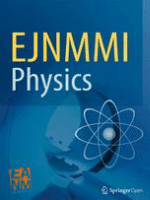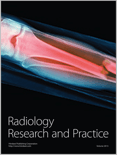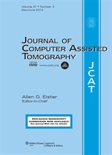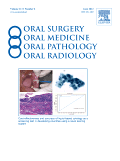
Oral Radiology
Scope & Guideline
Bridging the gap between technology and clinical practice in dentistry.
Introduction
Aims and Scopes
- Radiologic Evaluation Techniques:
This includes the use of various imaging modalities such as cone beam computed tomography (CBCT), magnetic resonance imaging (MRI), and ultrasonography to assess oral and maxillofacial conditions. - Machine Learning and Artificial Intelligence Applications:
Research on the application of AI and machine learning algorithms to improve diagnostic accuracy and automate image analysis in dental radiology. - Clinical Imaging Guidelines:
The journal aims to develop and disseminate evidence-based clinical imaging guidelines to standardize practices in the diagnosis and treatment of dental conditions. - Cross-Disciplinary Research:
There is a focus on interdisciplinary approaches, integrating radiology with pathology, surgery, and other fields to provide comprehensive insights into oral health. - Innovative Imaging Techniques:
Exploration of new imaging technologies and methods, including advanced imaging techniques like texture analysis, elastography, and deep learning for improved diagnostics.
Trending and Emerging
- Integration of AI in Imaging:
There is a significant trend towards utilizing artificial intelligence for image analysis, diagnosis, and segmentation, with numerous studies exploring its potential to enhance diagnostic accuracy. - Advanced Imaging Techniques:
Emerging interest in advanced imaging modalities, particularly CBCT and MRI, is evident, with a focus on their applications in evaluating complex dental conditions. - Patient-Centric Imaging Approaches:
Research is increasingly focusing on patient safety and the development of imaging protocols that minimize radiation exposure, reflecting a growing awareness of the importance of patient-centered care. - Multidisciplinary Approaches:
There is a trend towards interdisciplinary research that combines radiology with other fields such as oncology, pathology, and surgery to provide holistic insights into patient care. - Functional Imaging Studies:
Emerging studies are focusing on functional imaging techniques that assess the physiological and pathological processes in dental and maxillofacial conditions, moving beyond static anatomical assessments.
Declining or Waning
- Traditional Radiographic Techniques:
There is a noticeable decline in studies focusing solely on traditional radiographic techniques, as newer imaging modalities like CBCT and MRI become more prevalent. - Basic Radiographic Anatomy Studies:
Research centered on basic anatomical studies using radiographs has decreased, likely due to the increasing complexity and technological advancements in imaging that allow for more detailed analyses. - Static Imaging Methodologies:
The journal has moved away from static imaging methodologies towards dynamic and functional imaging approaches, such as elastography and 3D imaging, which provide more comprehensive insights. - Non-Digital Imaging Techniques:
There is a diminishing focus on analog imaging techniques and methodologies, as the field has largely transitioned to digital imaging solutions that offer enhanced accuracy and efficiency.
Similar Journals

European Radiology Experimental
Pioneering the Future of Medical ImagingEuropean Radiology Experimental is a premier open-access journal published by Springer Wien, dedicated to advancing the field of radiology through innovative research and experimentation. Since its establishment in 2017, the journal has quickly gained recognition, evidenced by its impressive Q1 ranking in the Radiology, Nuclear Medicine and Imaging category, and its placement within the top 83rd percentile of the Scopus rankings. Based in the United Kingdom, this journal aims to bridge the gap between clinical practice and cutting-edge research, providing a platform for rigorous peer-reviewed articles that explore new methodologies, technologies, and insights in radiological sciences. With a commitment to open access, European Radiology Experimental ensures that its content is readily accessible to a global audience, supporting the dissemination of knowledge and fostering collaborations among researchers, professionals, and students in the medical imaging community. As it progresses through its convergence years, the journal continues to play a vital role in shaping the future of radiological research and practice.

EJNMMI Physics
Exploring the Intersection of Innovation and Medical Imaging.EJNMMI Physics, the premier journal for advancements in nuclear medicine and imaging, is published by Springer in Switzerland and has been an open-access outlet since 2014, allowing for broad dissemination of critical research findings. With an ISSN of 2197-7364, the journal aims to bridge the gap between state-of-the-art physics and practical applications in biomedical engineering and radiology. Its impressive Q1 ranking in multiple categories, including Biomedical Engineering, Instrumentation, Radiation, and Radiology, Nuclear Medicine and Imaging, exemplifies its significant impact in the field. The journal boasts exceptional metrics with Scopus rankings placing it in the top echelons across disciplines, including a 6th position out of 58 in Radiation, and serves as an essential resource for researchers, professionals, and students who are eager to contribute to and stay informed about cutting-edge scientific advancements. With a broadening scope until 2024, EJNMMI Physics is an indispensable tool for those dedicated to pushing the boundaries of knowledge in medical physics and imaging technologies.

Abdominal Radiology
Exploring Innovations in Abdominal RadiologyAbdominal Radiology is an esteemed journal published by Springer, focusing on the intricate and evolving field of abdominal imaging. With its ISSN 2366-004X and E-ISSN 2366-0058, this journal serves as a vital platform for disseminating high-quality research and clinical findings that advance both the understanding and practice of radiology specifically related to abdominal diseases. With a commendable impact, categorized in 2023 as Q2 in the fields of Gastroenterology, Radiological and Ultrasound Technology, and Radiology, Nuclear Medicine and Imaging, and Q1 in Urology, it attracts an audience eager for cutting-edge insights. Furthermore, its ranking in Scopus reflects its strong influence, with a notable position of #21 in Urology and #92 in Radiology. The journal adopts an Open Access model, facilitating a wider dissemination of knowledge and promoting collaborative research efforts on a global scale. The convergence of contributions from established researchers and emerging professionals alike enriches its content from 2016 to 2024, ensuring that readers remain at the forefront of abdominal diagnostics and therapeutic advancements.

Egyptian Journal of Radiology and Nuclear Medicine
Exploring Breakthroughs in Diagnostic ImagingThe Egyptian Journal of Radiology and Nuclear Medicine, published by Springer, is a premier open access journal that has provided valuable insights and advancements in the fields of radiology and nuclear medicine since its initiation in 2010. With an E-ISSN of 2090-4762, this journal is dedicated to bridging the gap between research and clinical practice, allowing for the dissemination of high-quality research to a global audience. Situated in Germany, it enjoys a robust reputation in the academic community, evidenced by its categorization in the Q3 quartile for 2023, as well as its Scopus ranking, where it holds a position of #225 out of 333 in the domain of Radiology, Nuclear Medicine and Imaging, placing it in the 32nd percentile. The journal's open access model ensures that researchers, professionals, and students can freely access innovative studies, reviews, and case reports that discuss the latest methodologies, technological advancements, and clinical outcomes in radiology and nuclear medicine. As it looks toward its converged years spanning from 2010 to 2024, the Egyptian Journal of Radiology and Nuclear Medicine continues to be an essential resource for advancing knowledge and fostering ongoing collaboration in these critical fields.

Radiology Research and Practice
Elevating standards in radiology through impactful research.Radiology Research and Practice is an esteemed journal dedicated to advancing the field of radiology through pioneering research and innovation. Published by HINDAWI LTD, this journal has been an Open Access platform since 2011, ensuring that cutting-edge findings are accessible to a global audience. With an impressive impact reflected by its Scopus rankings—Rank #44/284 in Medicine: Radiology, Nuclear Medicine and Imaging and Rank #9/49 in Health Professions: Radiological and Ultrasound Technology—it proudly operates at the forefront of the field, representing the 84th and 82nd percentiles respectively. The journal focuses on a wide range of topics including diagnostic imaging, therapeutic radiology, and the latest technological advancements, making it an invaluable resource for researchers, healthcare professionals, and students alike. With its commitment to quality and open dissemination of knowledge, Radiology Research and Practice plays a crucial role in fostering collaboration and innovation within the radiological sciences.

EUROPEAN JOURNAL OF RADIOLOGY
Bridging Research and Clinical Excellence in RadiologyThe European Journal of Radiology, published by Elsevier Ireland Ltd, is a premier peer-reviewed journal in the fields of radiology, nuclear medicine, and imaging. Established in 1981, it has carved a significant niche within the academic community, showcasing innovative research that enhances medical imaging practices and improves patient care. With an impressive ranking in the Q1 category for both Medicine (miscellaneous) and Radiology, Nuclear Medicine, and Imaging in 2023, the journal is recognized globally for its commitment to advancing scientific knowledge and improving imaging methodologies. The journal's Scopus ranking of #60/333, placing it in the 82nd percentile, underlines its reputation for high-quality research and scholarly contributions. While traditionally a subscription-based journal, it continually evolves to meet the demands of the academic landscape, aiming to bridge the gap between research and clinical practice. Researchers, healthcare professionals, and students alike can benefit from exploring its extensive archives and current publications, which are curated to foster education and innovation in the medical imaging domain.

JOURNAL OF COMPUTER ASSISTED TOMOGRAPHY
Pioneering Research in Computer-Assisted ImagingJOURNAL OF COMPUTER ASSISTED TOMOGRAPHY, published by Lippincott Williams & Wilkins, stands as a vital resource in the field of Radiology, Nuclear Medicine, and Imaging. Since its inception in 1977, this journal has been dedicated to advancing the understanding and application of computer-assisted tomography, emphasizing innovative research and clinical practices that enhance diagnostic imaging techniques. With an impact factor reflective of its rigorous scholarship and relevance—ranking in the Q3 category—the journal serves as an essential platform for contributors and readers alike, navigating the challenges and opportunities within a rapidly evolving field. Researchers, professionals, and students are encouraged to engage with the rich repository of articles that cover emerging technologies, clinical applications, and theoretical advancements, collectively fostering a deeper comprehension of imaging sciences. Although not currently designated as an open-access journal, it continues to enhance discourse in the community from its headquarters in Philadelphia, PA, maintaining a commitment to the highest standards of academic excellence.

Oral Surgery Oral Medicine Oral Pathology Oral Radiology
Delivering Cutting-Edge Research for Dental ProfessionalsOral Surgery Oral Medicine Oral Pathology Oral Radiology, published by Elsevier Science Inc., is a prestigious journal dedicated to advancing the fields of dentistry, oral surgery, pathology, and radiology. With an impressive impact factor positioning it in the Q2 category across multiple disciplines, including Dentistry, Oral Surgery, and Pathology, this journal is an essential resource for researchers and professionals seeking cutting-edge insights and evidence-based practices. The journal is renowned for its rigorous peer-review process, ensuring that only the highest quality research is disseminated to its audience. Although currently not adopting an Open Access model, it continues to attract a broad readership through its commitment to scholarly excellence, having ranked in the top percentiles in various scientific categories as per Scopus. The journal plays a crucial role in bridging the gap between scientific research and clinical practice, providing vital information that supports improving patient care in oral health. As it converges years of insightful published research from 2012 to 2024, this journal remains a vital resource for students, practitioners, and researchers dedicated to advancing the science and practice of oral health.

BRITISH JOURNAL OF RADIOLOGY
Transforming Clinical Insights with Cutting-Edge ResearchBritish Journal of Radiology is a leading peer-reviewed journal published by the British Institute of Radiology, dedicated to advancing the field of radiology, nuclear medicine, and imaging. With a prestigious history dating back to 1945, this journal is at the forefront of disseminating cutting-edge research and innovations that significantly impact clinical practice. Currently enjoying a Q1 ranking in the field of radiology and Q2 in general medicine for 2023, it is recognized for its rigorous standards and high-quality content, ranking #87 out of 333 in Scopus for specialties related to Medicine, Radiology, Nuclear Medicine, and Imaging, placing it in the 74th percentile. Researchers, professionals, and students are encouraged to engage with the latest findings and comprehensive reviews presented within its pages, which contribute not only to academic discourse but also to the evolution of practice in the wider medical community.

Forensic Imaging
Enhancing forensic practices through impactful imaging methodologies.Forensic Imaging is a premier international journal dedicated to advancing the field of forensic science through the analysis and implementation of imaging techniques. Published by ELSEVIER, this open access journal provides a platform for researchers, professionals, and students to disseminate innovative studies that bridge the disciplines of Pathology, Forensic Medicine, and Radiology. Since its inception in 2020, it has gained recognition and holds a respectable Q3 ranking in its categories for both Pathology and Forensic Medicine and Radiology, Nuclear Medicine and Imaging, reflecting its commitment to high-quality, impactful research. The journal's practical focus on imaging methodologies offers valuable insights into forensic investigations and enhances professional practices, making it an essential read for those involved in forensic research and application. Available in both print and online formats, Forensic Imaging serves as a vital resource for fostering breakthroughs in the analysis of forensic evidence.